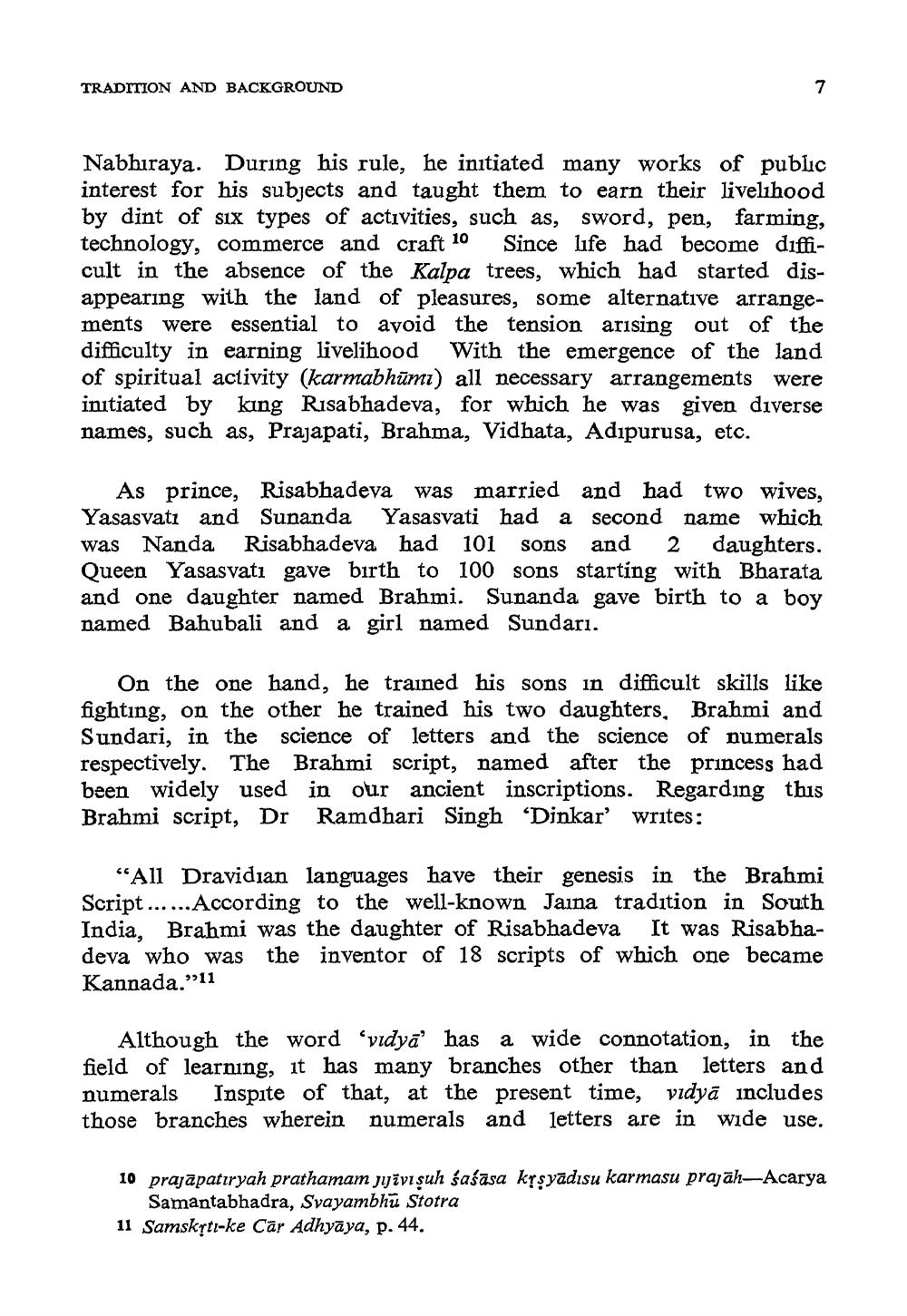________________
TRADITION AND BACKGROUND
to earn eheir liveshold
Nabhiraya. During his rule, he initiated many works of public interest for his subjects and taught them to earn their livelihood by dint of six types of activities, such as, sword, pen, farming, technology, commerce and craft 10 Since life had become difficult in the absence of the Kalpa trees, which had started disappearing with the land of pleasures, some alternative arrangements were essential to avoid the tension arising out of the difficulty in earning livelihood With the emergence of the land of spiritual activity (karmabhumi) all necessary arrangements were initiated by king Risabhadeva, for which he was given diverse names, such as, Prajapati, Brahma, Vidhata, Adipurusa, etc.
As prince, Risabhadeva was married and had two wives, Yasasvati and Sunanda Yasasvati had a second name which was Nanda Risabhadeva had 101 sons and 2 daughters. Queen Yasasvatı gave birth to 100 sons starting with Bharata and one daughter named Brahmi. Sunanda gave birth to a boy named Bahubali and a girl named Sundari.
On the one hand, he trained his sons in difficult skills like fighting, on the other he trained his two daughters, Brahmi and Sundari, in the science of letters and the science of numerals respectively. The Brahmi script, named after the princess had been widely used in our ancient inscriptions. Regarding this Brahmi script, Dr Ramdhari Singh 'Dinkar' writes:
"All Dravidian languages have their genesis in the Brahmi Script ......According to the well-known Jaina tradition in South India, Brahmi was the daughter of Risabhadeva It was Risabhadeva who was the inventor of 18 scripts of which one became Kannada."11
Although the word 'vidyā' has a wide connotation, in the field of learning, it has many branches other than letters and numerals Inspite of that, at the present time, vidyā includes those branches wherein numerals and letters are in wide use.
10 prajāpatıryah prathamam jijīvişuh śaśasa křşyadısu karmasu prajah-Acarya
Samantabhadra, Svayambhu Stotra 11 Samskytı-ke Car Adhyāya, p. 44.




